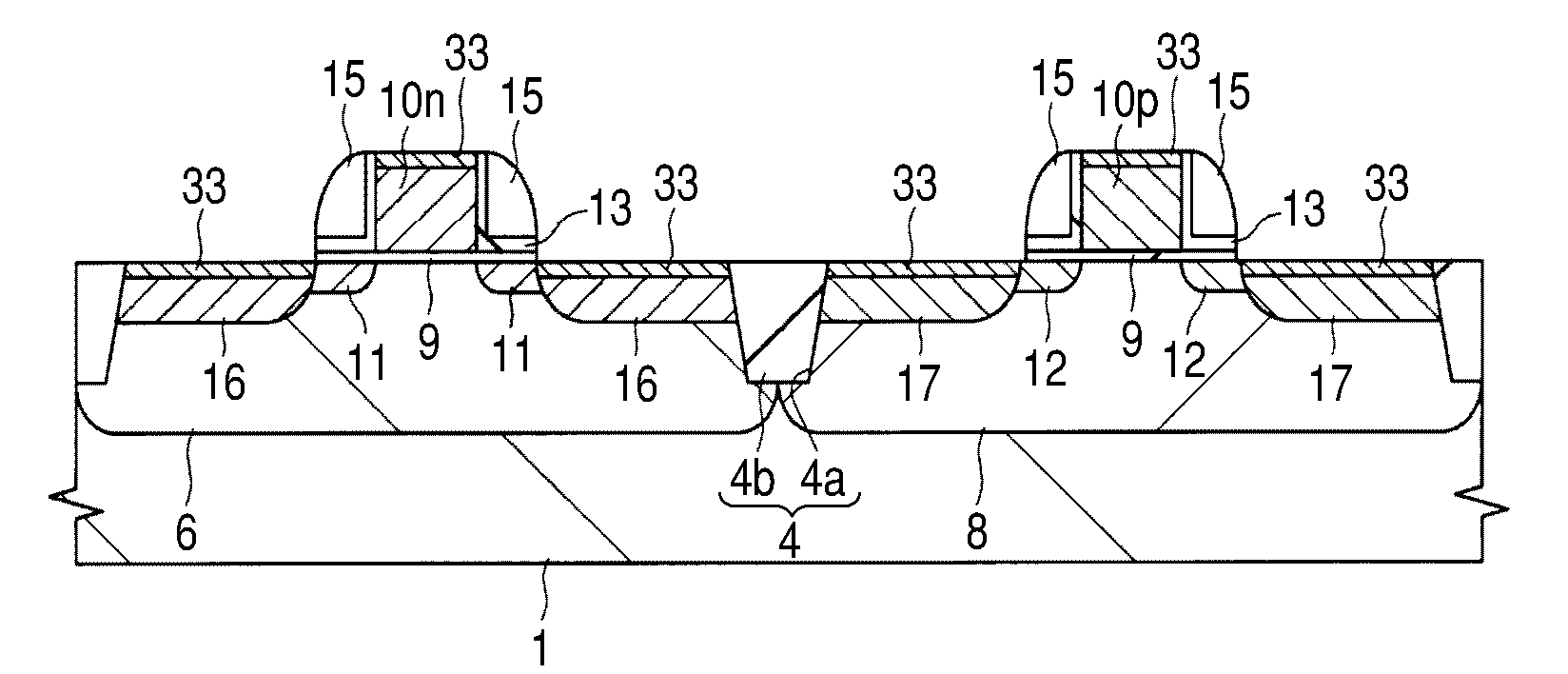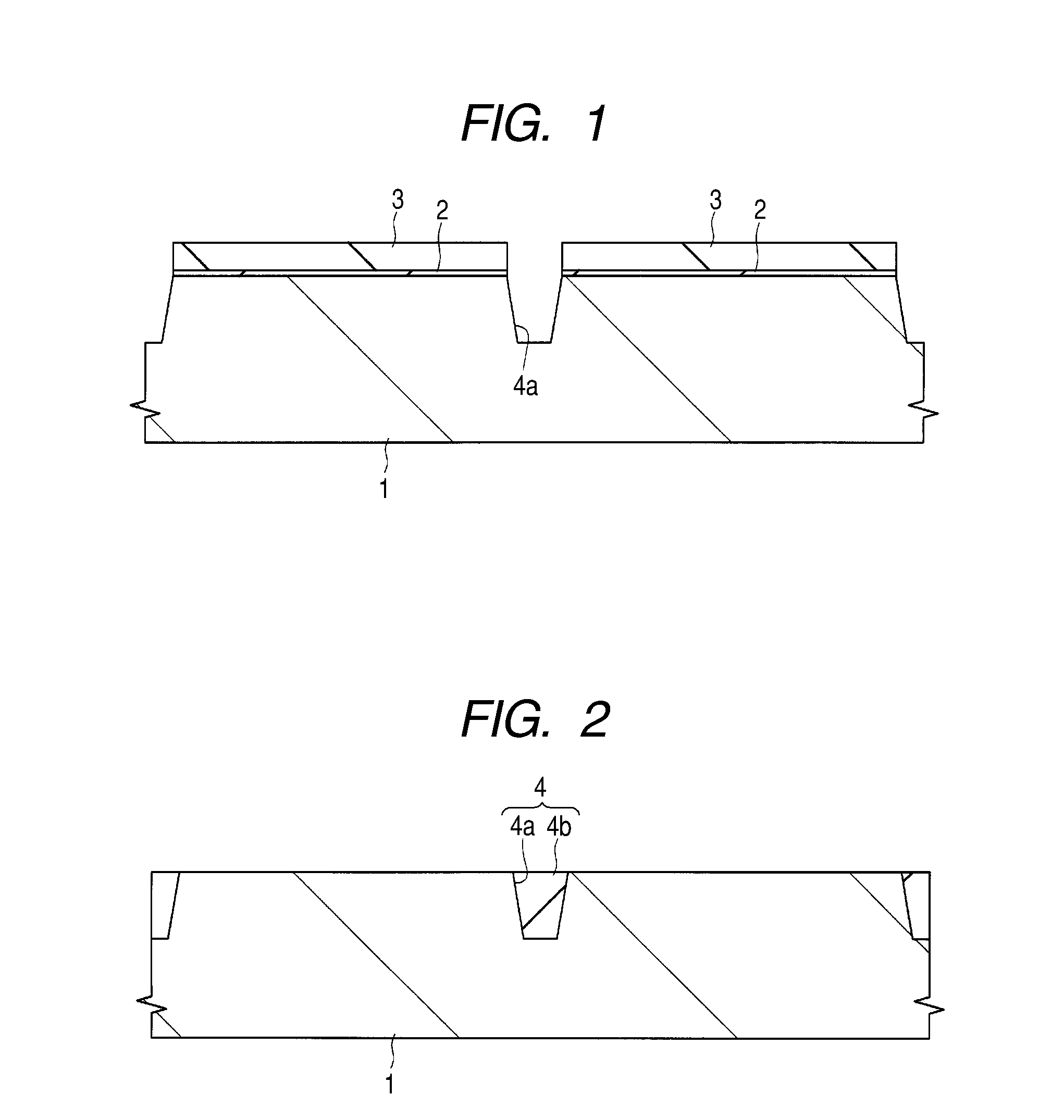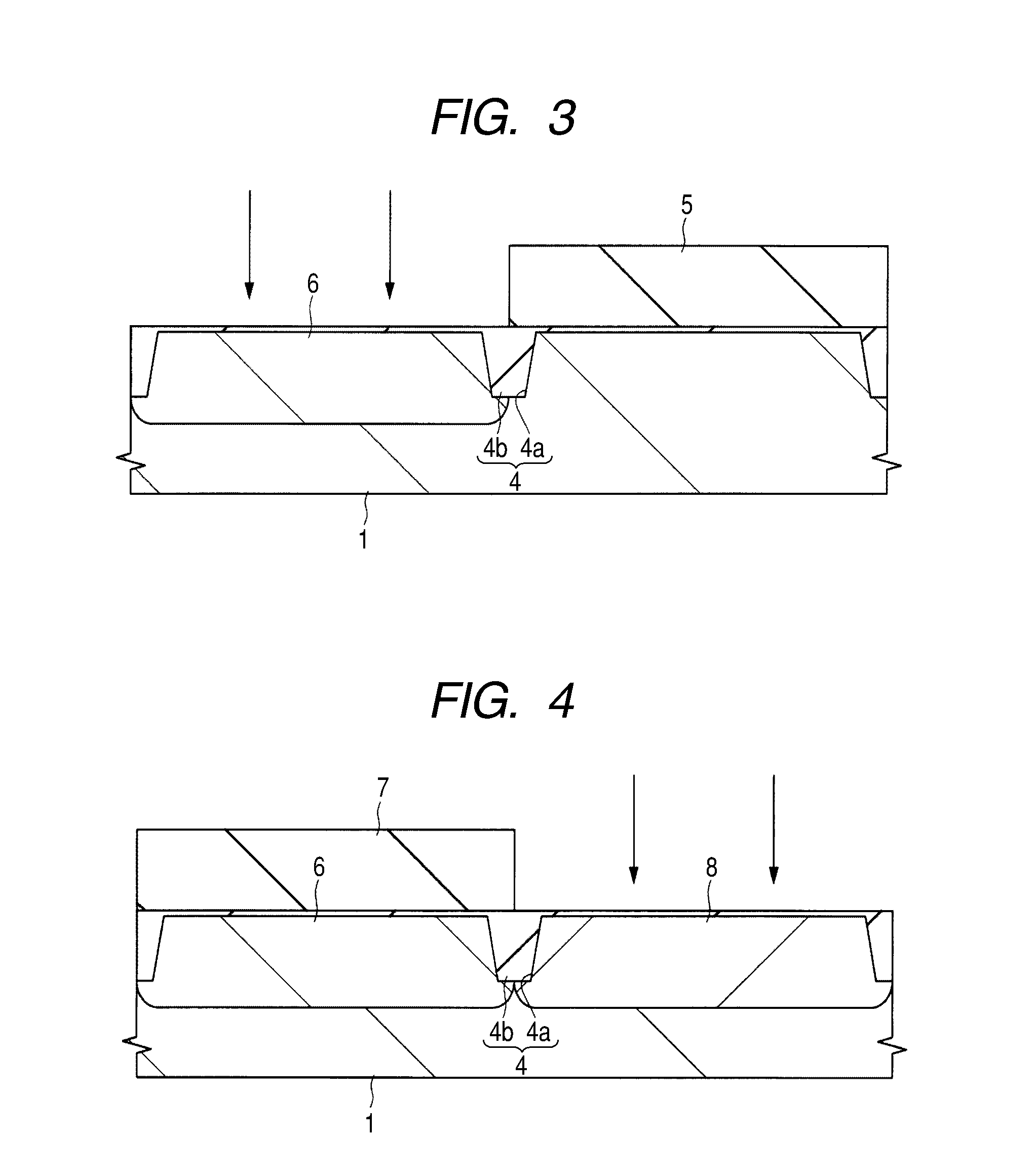Method of manufacturing a semiconductor device
a manufacturing method and technology of semiconductor devices, applied in the direction of basic electric elements, radiation controlled devices, transistors, etc., can solve the problems of difficult stably carrying out the first thermal treatment to form, the aggregation of ni and si, and the inability to achieve high-speed operation, so as to reduce the variation of electrical characteristics of metal silicide layers and improve throughput. , the effect of improving the reliability and product yield of semiconductor elements
- Summary
- Abstract
- Description
- Claims
- Application Information
AI Technical Summary
Benefits of technology
Problems solved by technology
Method used
Image
Examples
first embodiment
[0071]A method of manufacturing a COMS (Complementary Metal Oxide Semiconductor) device according to a first embodiment of the present invention will be described using FIG. 1 to FIG. 25. FIG. 1 to FIG. 10, FIG. 12, FIG. 17, and FIG. 23 to FIG. 25 are section views of essential parts of a CMOS device, FIG. 11 is a manufacturing process flow diagram of a process to form a silicide layer by the SALICIDE technique, FIG. 13 is a schematic plan view of a device for forming a film of a silicide material, FIG. 14 is a process diagram for forming a film of a silicide material, FIG. 15 is a schematic section view of a dry cleaning processing chamber included in the device for forming a film of a silicide material, FIG. 16 is a schematic section view of a chamber for illustrating a processing process of a semiconductor wafer in the dry cleaning processing chamber included in the device for forming a film of a silicide material, FIG. 18 is a graph diagram for illustrating the temperature rise ...
second embodiment
[0147]A semiconductor device according to a second embodiment resembles that in the first embodiment described above, having a CMOS device in which the platinum-added nickel silicide layer 33 in the PtNiSi phase is formed over the surface of the gate electrode 10n of nMIS and the source / drain diffusion region 16 and over the surface of the gate electrode 10p of pMIS and the source / drain diffusion region 17, but differs from that in the first embodiment described above in the thermal treatment method in the forming process of the platinum-added nickel silicide layer 33. Three divided processes (silicide reaction process, unreacted film removal process, and silicide stabilization process) of the thermal treatment method for forming the platinum-added nickel silicide layer 33 according to the second embodiment will be described below. Conditions of formation of the platinum-added nickel silicide layer 33 in the second embodiment are summarized in Table 3.
TABLE 3Metal filmNiPt(8-14 nm)B...
third embodiment
[0165]A semiconductor device according to a third embodiment, different from that in the first or second embodiment described above, has a CMOS device in which a nickel silicide layer not added with platinum in a NiSi phase is formed over the surface of the gate electrode 10n of nMIS and the source / drain diffusion region 16 and over the surface of the gate electrode 10p of pMIS and the source / drain diffusion region 17. Three divided processes (silicide reaction process, unreacted film removal process, and silicide stabilization process) of a method of forming a nickel silicide layer, in particular, a thermal treatment method of forming a nickel silicide layer according to the third embodiment will be described below. Conditions of formation of the nickel silicide layer in the third embodiment are summarized in Table 4.
TABLE 4Metal filmNi(9 nm)Barrier filmTiN(15 nm)1st RTA400-430° C. 3-10° C. / s2nd RTASpike: 410-635° C.10-250° C. / s
[0166]First, over the main surface of the semiconducto...
PUM
 Login to View More
Login to View More Abstract
Description
Claims
Application Information
 Login to View More
Login to View More - R&D
- Intellectual Property
- Life Sciences
- Materials
- Tech Scout
- Unparalleled Data Quality
- Higher Quality Content
- 60% Fewer Hallucinations
Browse by: Latest US Patents, China's latest patents, Technical Efficacy Thesaurus, Application Domain, Technology Topic, Popular Technical Reports.
© 2025 PatSnap. All rights reserved.Legal|Privacy policy|Modern Slavery Act Transparency Statement|Sitemap|About US| Contact US: help@patsnap.com



